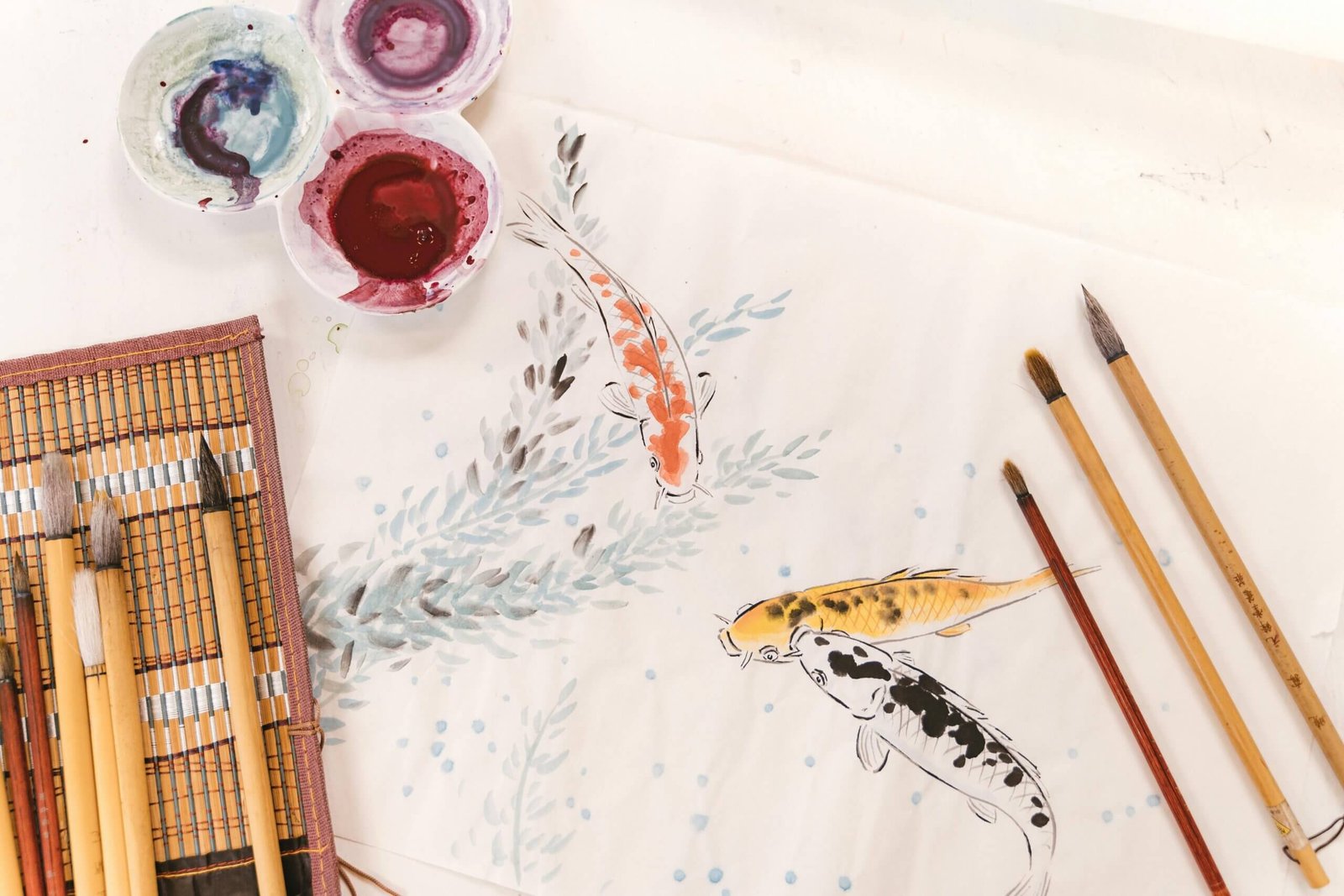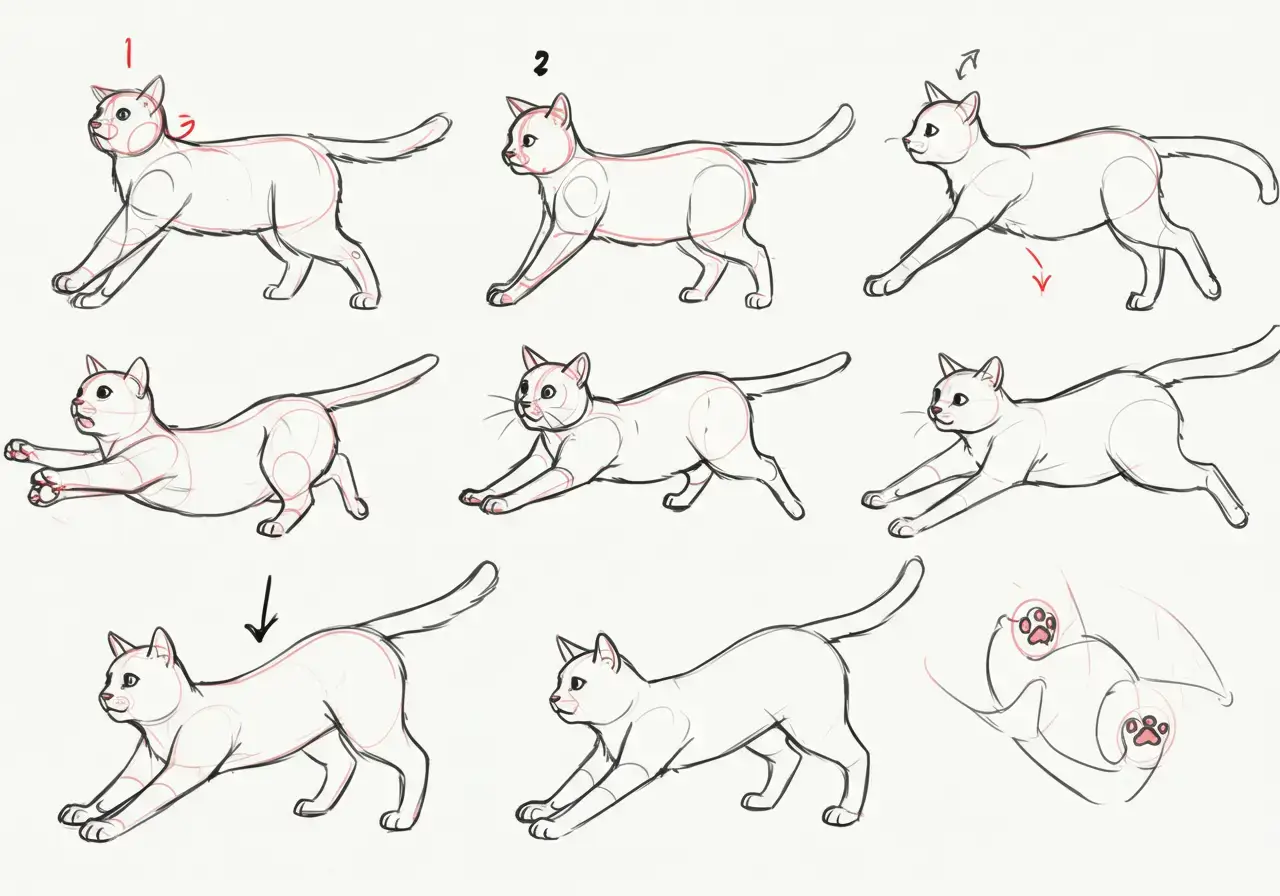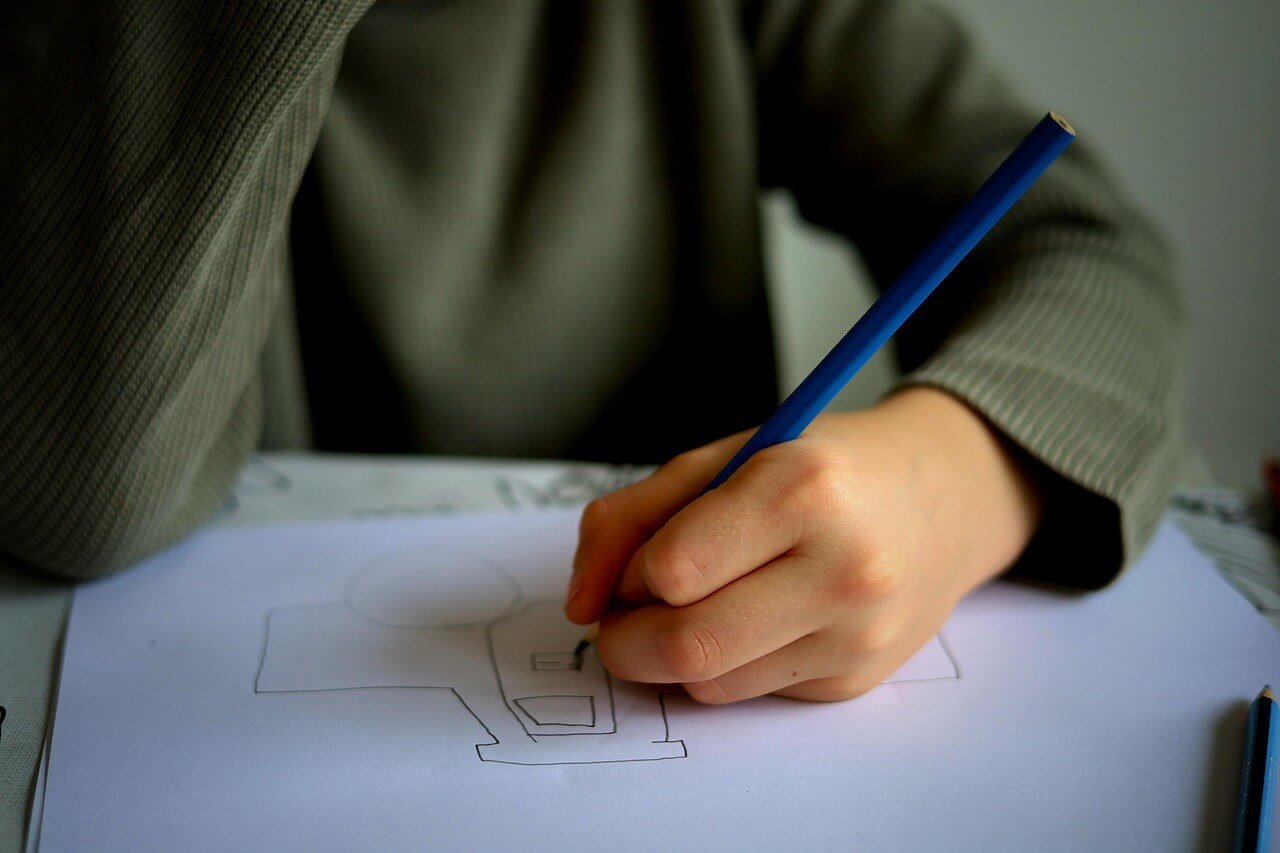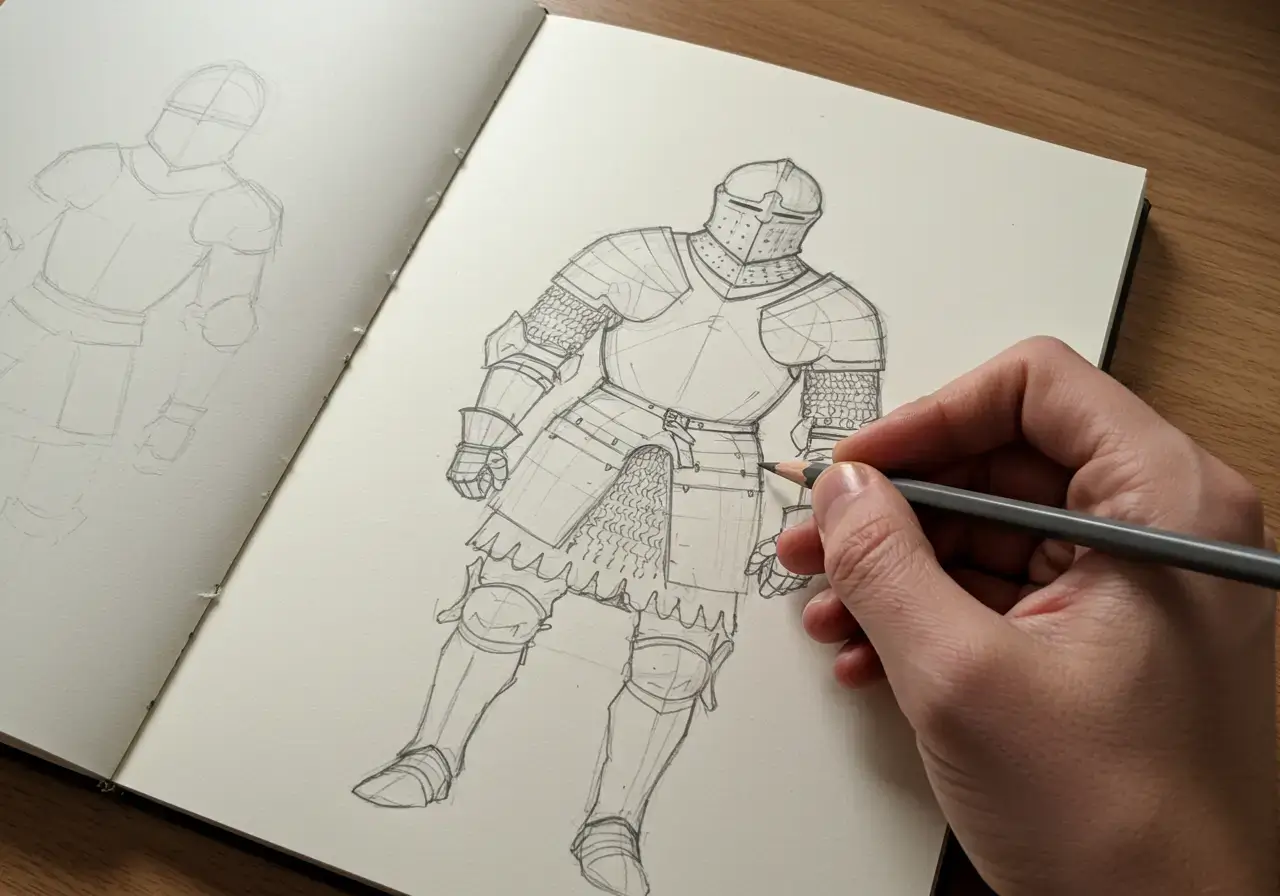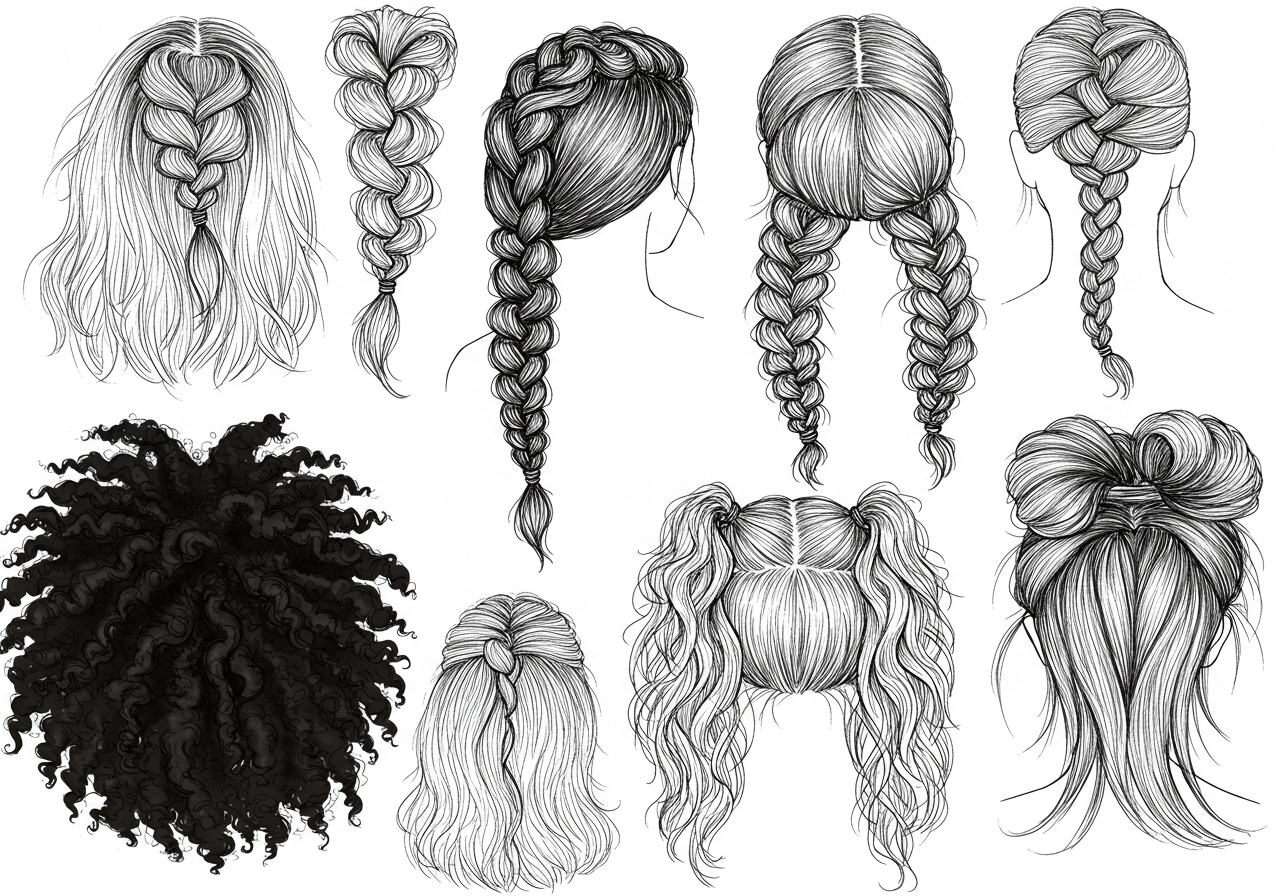How to Draw a Fish: Easy Tutorial for All Ages
Hey there, budding artists and doodlers! Ever wanted to draw a fish but felt like your artistic skills were, well, a little * मछली* (fishy)? You’re in luck! Today, we’re diving fin-first into the wonderful world of fish drawing easy style. Forget those intimidating art school lessons; we’re talking about making beautiful, swimming creatures with just a few simple steps. Whether you’re a total beginner, drawing with your kids, or just looking to unwind with some creative fun, this guide is packed with tips to get you sketching like a pro in no time!
Drawing fish can be incredibly relaxing, and it’s a fantastic way to unleash your inner artist. You don’t need fancy supplies – just a pencil, paper, and a desire to create something cool. We’ll explore everything from super simple shapes to adding those little details that make your fish pop. Ready to make a splash? Let’s get started!
Table of Contents
From Doodles to Dazzling: What People Really Search About “Fish Drawing Easy”
It’s actually pretty wild what folks are looking for when they Google “fish drawing easy”! It turns out, people aren’t just searching for a quick tutorial; they’re looking for solutions to common artistic roadblocks. Let’s peek into the minds of fellow sketchers and see what questions pop up the most.
The Quest for Simplicity: “How can I draw a fish easily?”
This is the big one! People want methods that don’t require an art degree. They’re looking for basic shapes, step-by-step instructions, and ways to build up a fish without feeling overwhelmed. Think circles, ovals, and simple lines – that’s the magic formula most people are after. Nobody wants a headache when they’re trying to relax and draw!
Tailored for Tiny Hands: “Easy fish drawing for kids?”
Parents and educators are constantly on the hunt for kid-friendly art activities. They need instructions that are clear, engaging, and result in something recognizable and rewarding for little ones. This often means very few steps, big shapes, and lots of room for creative coloring. It’s all about boosting confidence and having fun!
Beyond the Basics: “How to add details to a simple fish drawing?”
Once the basic outline is down, the next natural step is to make it their own. People want to know how to add scales, fins, eyes, and even cool patterns. They’re looking for those little touches that transform a generic fish into an awesome, unique marine creature. This is where your fish drawing easy can really start to shine!
The Digital Dive: “Easy fish drawing digital art?”
With tablets and drawing apps becoming more accessible, a lot of people are curious about how these simple techniques translate to digital mediums. They’re looking for tips on using layers, basic brushes, and coloring digitally without getting bogged down by complex software. It’s about bringing that easy, analog feeling to the digital canvas.
The “How-To” for Specifics: “How to draw an easy [specific type of fish]?”
Once they get the hang of a generic fish, folks often want to tackle specific species, like a goldfish, a shark, or even a cute little clownfish. They’re looking for how to adapt the basic principles to create recognizable features of different aquatic friends. It’s like graduating from “generic car” to “cool sports car”!
Understanding these common searches helps us tailor our guide to give you exactly what you need. We’re not just showing you how to draw; we’re showing you how to overcome those typical art dilemmas and empower you to create some fin-tastic art!
Your Fin-tastic Journey Begins: Step-by-Step Guide to the Easiest Fish Drawing Ever!
Alright, buckle up, art adventurers! We’re about to embark on a super chill, super easy adventure into drawing fish. No need to be a Picasso here; we’re going for fun, accessibility, and a result that you’ll genuinely be proud of. This is your ultimate fish drawing easy breakdown!
Step 1: The Basic Body Shape – It All Starts with a Smile (or an Oval)!
Every fish needs a body, right? And the easiest way to start is with a simple, friendly shape.
- Option A: The Friendly Oval. This is my go-to! Draw a slightly squashed oval, like a stretched-out egg laying on its side. Don’t press too hard; this is just your guide. This shape is super versatile and will be the foundation for most of your fish, whether you’re aiming for a fat goldfish or a sleek trout.
- Option B: The Sideways “U” or a Curved Line. If an oval feels too constraining, try drawing a gentle, wide “U” shape that you then connect with another gentle curve on top. This gives you a slightly more dynamic body shape from the get-go.
Pro-Tip: Think of it like this: if you can draw a potato, you can draw the start of a fish!
Step 2: Adding the Tail – Your Fish Needs to Swim!
Now that our fish has a body, it needs a way to propeller itself through the water! The tail (or caudal fin, if you want to get fancy) is next.
- The Classic “V” Shape: From the back of your oval, draw two lines that angle away from each other and then gently curve back inwards, meeting to form a soft “V” or a crescent moon shape. This is probably the most recognizable fish tail.
- A “M” or “W” for More Flair: For a slightly more dynamic tail, try drawing two small “M” or “W” shapes at the end of your body. This gives a nice, slightly wavy look, perfect for our fish drawing easy approach.
Table: Easy Tail Shapes
| Tail Style | Description |
|---|---|
| Classic Fan | Simple “V” shape, rounded connecting lines. |
| Forked Tail | Deeper “V” with a clear division, like a tuna or mackerel. |
| Rounded Tail | A simple curve that matches the body’s end, like a goldfish. |
Step 3: Giving Your Fish Fins – Helping it Steer and Balance
Fins are essential for movement and stability. Let’s keep these super simple too.
- Top Fin (Dorsal Fin): On the top of your fish’s body, draw a triangle or a gentle curve that rises up and then comes back down to meet the body. You can make it spiky or smooth, depending on the vibe you’re going for.
- Bottom Fin (Anal Fin): Near the back underside of your fish, draw a smaller version of the top fin. It helps balance!
- Side Fins (Pectoral Fins): These are like the fish’s arms! Draw a small, elongated teardrop or leaf shape on each side of the fish’s body, roughly where a shoulder would be. For a side view, you’ll just see one.
Remember: These are just guides. Feel free to experiment with different fin shapes! Think pointy, rounded, long, or short.
Step 4: The Face! Eyes, Mouth, and Gills
Now your fish needs some expression!
- The Eye: A simple circle is perfect! Place it towards the front of the body. You can add a smaller circle inside for the pupil and even a tiny white dot for a little sparkle. This simple addition can really bring your fish drawing easy to life!
- The Mouth: A small “C” shape or a gentle curve near the front of the fish’s head works wonders. You can make it look happy, surprised, or even a little grumpy – it’s all up to you!
- Gills: Just behind the eye, draw a curved line or a small arc. This indicates where the fish breathes.
Quote: “Every child is an artist. The problem is how to remain an artist once he grows up.” – Pablo Picasso. Don’t lose that childlike wonder in your drawing!
Step 5: Adding the Swoosh – Scales and Details
This is where your fish starts to feel truly unique!
- Scales: You don’t have to draw every single scale! A few overlapping “C” or “U” shapes across the body can suggest scales beautifully. You can make them bigger near the head and smaller towards the tail.
- Texture: Try adding some dots, stripes, or wavy lines to the fins and tail for extra texture.
- Water Bubbles: Little circles floating around your fish can instantly give the impression of it swimming in water.
- Background: A few wavy lines on the page can instantly turn your fish into an underwater scene. Think seaweed, rocks, or even a little treasure chest if you’re feeling ambitious!
Actionable Tip: Don’t be afraid to use a different colored pencil or marker to outline your fish once you’re happy with the pencil sketch. It makes it pop!
From Cartoon Chuckles to Realistic River Dwellers: Expanding Your Fish Drawing Horizons
So, you’ve mastered the basics of fish drawing easy! High five! But what if you want to try something a little different? Maybe something goofy, or perhaps a bit more true-to-life? Let’s explore how to tweak those simple shapes into a wider variety of aquatic awesomeness.
The Charm of Cartoon Fish Doodles
Who doesn’t love a goofy, expressive cartoon fish? They’re all about personality! Here’s how you can make your fish drawings burst with character:
- Exaggerate Features: Make the eyes huge and bug-eyed, give them super long eyelashes, or a ridiculously wide, grinning mouth. The more outlandish, the better!
- Wacky Shapes: Instead of a perfect oval, draw a body that’s squarish, super round, or even shaped like a star! Think outside the fishbowl.
- Over-the-Top Fins: Give your fish massive, flowing fins or tiny, almost vestigial ones. Experiment with crazy patterns on them too – polka dots, stripes, zigzags!
- Expressions Galore: A raised eyebrow, a worried frown, a mischievous wink – cartoon fish are all about showing emotions. Use simple lines around the eyes and mouth to convey feelings.
- Props and Accessories: Want to make it even more fun? Give your cartoon fish a tiny hat, a monocle, or even a little snorkel! The possibilities are endless.
Creating cartoon fish doodles is pure joyful expression. It’s a fantastic way to practice breaking away from strict realism and letting your imagination run wild.
Diving Deeper: The Allure of a Realistic Fish Sketch
Ready for a slightly more challenging but incredibly rewarding endeavor? A realistic fish sketch involves paying closer attention to anatomy, texture, and light. But don’t worry, we’re still building on those easy foundations!
- Reference Photos are Your Friend: The absolute best way to draw realistically is to use a good photo reference. Search for different types of fish – salmon, bass, trout, tuna – and observe their unique shapes, fin placements, and scale patterns.
- Basic Body Proportions: Even for realism, start with that foundational oval or curved shape. Then, refine it. Notice how a trout is sleeker and torpedo-shaped, while a bass might be deeper-bodied.
- Detailed Fins: Observe how fins are often translucent, with delicate rays or spines. Don’t just draw an outline; try to suggest that internal structure with light lines.
- Scales – Imply, Don’t Draw Every Single One: For realism, you still don’t need to draw every scale. Instead, focus on how they overlap and catch the light. Use small, curved lines that follow the contour of the body. You can add a darker line under each “scale” to give a sense of depth and overlap.
- Eyes with Life: Realistic fish eyes often have a dark pupil surrounded by a colored iris. Pay attention to how light reflects off the eye – a small highlight can add a lot of life.
- Shading and Texture: This is key for realism.
- Value: Use different shades of pencil (light to dark) to show where light hits the fish and where shadows fall. This gives your fish a 3D quality.
- Texture: Create subtle texture by varying your pencil strokes. For example, a slightly rougher texture for scales, smoother for fins.
- Color (if using): If you’re coloring, observe the subtle gradients and patterns in real fish. They’re rarely just one solid color!
Table: Cartoon vs. Realistic Fish
| Feature | Cartoon Fish Doodles | Realistic Fish Sketch |
|---|---|---|
| Body Shape | Exaggerated, simple, often whimsical | Proportional, true to species’ anatomy |
| Eyes | Large, expressive, human-like | Proportional, focus on highlight & iris |
| Fins | Stylized, simple outlines, bold patterns | Detailed, translucent, showing bone/rays |
| Scales | Optional, simple patterns or implied | Subtle texture, implied overlap, shading |
| Expression | High, often comedic or emotional | Neutral, focused on natural posture |
| Details | Whimsical accessories, thick outlines | Fine lines, shading, anatomical accuracy |
Moving between cartoon and realistic styles is a fantastic way to develop your drawing skills. You learn different techniques and ways of seeing, making your overall art practice richer. Remember, even a realistic fish sketch starts with those fundamental shapes you perfected in the easy steps!
Beyond the Basics: Taking Your Fish Art to the Next Level!
So, you’ve mastered the art of the fish drawing easy and you’re even dabbling in cartoon fish doodles and perhaps even a realistic fish sketch. What’s next for your aquatic masterpieces? The world is your oyster… or, well, your ocean!
Experiment with Different Mediums
Don’t stick to just pencil and paper! Each medium offers a different feel and opens up new possibilities.
- Colored Pencils: Add vibrant hues and subtle shading. Layering colors can create amazing depth.
- Crayons: Great for bold, simple colors, especially for younger artists. You can even try crayon resist with watercolors!
- Markers: Offer crisp lines and bright, flat colors. Great for cartoon styles.
- Watercolors: Perfect for creating that fluid, underwater feel. You can get beautiful translucent effects.
- Digital Art: If you have a tablet and stylus, experiment with apps like Procreate, Krita, or even basic drawing tools in Photoshop. Layers make experimentation a breeze!
Insight: Using high CPC keywords like “easy drawing tutorials,” “artistic drawing techniques,” and “creative art projects” can help others discover your newfound drawing prowess online!
Dive into Different Perspectives
Most beginner drawings are side-on, right? Try drawing your fish from other angles!
- Head-On: How does a fish look swimming straight towards you? You’ll see more of its round head and less of its long body.
- From Above: Imagine looking down into a fish tank. How do the fins and tail fan out?
- Swimming Away: You’d primarily see the tail and the back of the body, with less detail on the head.
Playing with perspective is a fantastic way to challenge yourself and make your art more dynamic.
Create an Underwater Scene
Your fish doesn’t have to be alone on the page! Give it a home!
- Seaweed & Coral: Simple wavy lines for seaweed, and textured blobs for coral, can add so much character.
- Bubbles: Add lots of little circles (some overlapping) to show it’s underwater.
- Other Sea Creatures: A friendly crab, a cool starfish, or even a lurking shark in the background can tell a whole story.
- Light & Shadow: Think about how light filters through water. Maybe some dappled light from the surface, or shadows cast by rocks.
Use Your Fish Drawings for Fun Projects!
Don’t let your amazing fish art just sit in a sketchbook!
- Greeting Cards: Draw a cute fish for a birthday card or a thank you note.
- Bookmarks: Laminate your drawing and cut it out for a custom bookmark.
- Decorate a Notebook: Give your school supplies a personal touch.
- Gift Tags: Make unique tags for presents.
- Animations: If you’re feeling super ambitious, create a flipbook animation of your fish swimming!
Personalized Recommendation: If you found yourself really enjoying the details of a realistic fish sketch, consider looking up tutorials specific to different species like “how to draw a clownfish” or “how to draw a koi fish.” Each has unique challenges and rewards that will further hone your skills!
Your Burning Fish Drawing Questions Answered! (FAQ)
Okay, my artistic friends, I know you might have some lingering questions, even after our deep dive into fish drawing easy! Here are a few common ones I hear all the time:
Q1: I can only draw stick figures. Can I really learn to draw a decent fish?
A: Absolutely, 100%, without a doubt, YES! Learning to draw isn’t about being born with some magical talent; it’s about breaking things down into manageable steps and practice. Our “easy fish drawing” method is literally designed for absolute beginners. If you can draw an oval and a “V” shape, you’re already halfway there. Just grab a pencil, relax, and give it a try. You’ll surprise yourself! Seriously, I’ve seen some amazing fish come from people who swore they couldn’t draw a straight line.
Q2: What’s the best way to make my fish drawings look less flat and more 3D?
A: Great question! The magic word here is “shading.” Once you have your basic outline, think about where the light source is coming from.
- Shadows: Areas opposite the light source will be darker. Use lighter pressure for light areas and heavier pressure (or a darker pencil) for shadows.
- Highlights: A small, unshaded area or a tiny eraser mark can suggest where the light is directly hitting, making your fish look shiny and rounded.
- Curved Lines: When adding scales or patterns, make sure your lines curve around the body, rather than being flat. This helps emphasize the fish’s form. Even simple techniques like cross-hatching can add depth!
Q3: How do I handle making the fins look
natural, not just solid shapes?
A: This is a common hurdle but totally overcome-able! Think of fins as delicate, almost translucent structures.
- Light Lines: Instead of drawing thick outlines for fins, use very light, feathery strokes.
- Rays: Most fish fins have “rays” – thin, bone-like structures that support them. Draw a few faint parallel lines extending from the body into the fin.
- Wavy Edges: Don’t make fin edges perfectly straight. A very subtle wave or ripple makes them look softer and more organic.
- Overlap: If a fin is overlapping another part of the body, draw the part of the fin that’s in front and then subtly indicate the body behind it. It’s these small observations that elevate your fish drawing easy to something truly special.
Q4: I want to draw specific types of fish, like a Nemo (clownfish) or a shark. How do I adapt the general steps?
A: Awesome goal! You’re already thinking like an artist. The general steps are your foundation. To draw specific fish:
- Reference, Reference, Reference! Find good photos of the fish you want to draw. Pay close attention to its unique body shape (sharks are very sleek, clownfish are more oval), fin placement and shape, and distinctive markings (like Nemo’s stripes!).
- Identify Key Features: A shark has a large, triangular dorsal fin and specific gill slits. A clownfish has thick white bands with thin black borders. Focus on these unique identifiers first.
- Adapt the Basic Shape: Instead of a generic oval, might your shark start with a more elongated, pointed oval? Might your clownfish be a more perfect circle?
- Practice: Just keep practicing! The more you observe and draw, the better you’ll get at capturing the essence of different species. You’ll quickly move from generic fish drawing easy to specific fish species with confidence.
Q5: My drawings never look as good as the examples. How do I get past this frustration?
A: Oh, trust me, everyone feels this way sometimes! Even seasoned artists. Here’s the secret sauce:
- Embrace Imperfection: Your drawing doesn’t need to be perfect to be good. It just needs to be yours.
- Focus on Improvement, Not Perfection: Each time you draw, try to improve one small thing. Maybe this time your eye is better, or your tail feels more natural. Celebrate those small wins!
- Compare to Your Last Drawing: Don’t compare your beginner sketch to a master illustrator’s work. Compare it to the fish you drew yesterday. See the progress? That’s what matters.
- It’s a Journey: Drawing is a skill, and like any skill, it gets better with practice. There’s no finish line, just continuous learning and enjoyment. Most importantly, don’t forget to have fun! That’s what art is all about.
Wrapping Up Our Deep Dive into Drawing Fish!
Phew! We’ve covered a lot of ground today, haven’t we? From those super simple initial shapes to adding dazzling details and even tackling the difference between a funny cartoon fish doodles and a stately realistic fish sketch. I hope you’ve realized that drawing fish doesn’t have to be a daunting task, but rather a joyful, accessible, and incredibly rewarding creative adventure.
Remember, the goal isn’t just to produce a perfect drawing (though you absolutely will make some amazing ones!), but to enjoy the process. To feel that satisfaction of creating something with your own hands, to unwind, and to simply have some fun. Every stroke of your pencil, every wavy line for seaweed, every playful bubble, is a step in your artistic journey.
So, grab those pencils, re-read your favorite section, and keep drawing! The ocean (or your sketchbook!) is full of possibilities, and your unique fish are just waiting to emerge. Happy drawing, my friends, and may your artistic endeavors always be fin-tastic!

